1. Rahnemai-Azar AA, Rahnemaiazar AA, Naghshizadian R, Kurtz A, Farkas DT. Percutaneous endoscopic gastrostomy: indications, technique, complications and management. World J Gastroenterol. 2014; 20(24):7739–7751. PMID:
24976711.

2. Homan M, Hauser B, Romano C, Tzivinikos C, Torroni F, Gottrand F, et al. Percutaneous endoscopic gastrostomy in children: an update to the ESPGHAN position paper. J Pediatr Gastroenterol Nutr. 2021; 73(3):415–426. PMID:
34155150.

3. de Sousa Magalhães R, Cúrdia Gonçalves T, Sousa-Pinto B, Rosa B, Marinho C, Cotter J. Percutaneous endoscopic gastrostomy: dealing with the issue of dislodgement. Scand J Gastroenterol. 2020; 55(4):485–491. PMID:
32202441.

4. Sandberg F, Viktorsdóttir MB, Salö M, Stenström P, Arnbjörnsson E. Comparison of major complications in children after laparoscopy-assisted gastrostomy and percutaneous endoscopic gastrostomy placement: a meta-analysis. Pediatr Surg Int. 2018; 34(12):1321–1327. PMID:
30291404.

5. Zenitani M, Nose S, Sasaki T, Oue T. Safety and efficacy of laparoscopy-assisted percutaneous endoscopic gastrostomy in infants and small children weighing less than 10 kg: a comparison with larger patients. Asian J Endosc Surg. 2021; 14(1):44–49. PMID:
32319215.

6. Fraser JD, Aguayo P, Sharp SW, Holcomb GW 3rd, Ostlie DJ, St Peter SD. The safety of laparoscopy in pediatric patients with ventriculoperitoneal shunts. J Laparoendosc Adv Surg Tech A. 2009; 19(5):675–678. PMID:
19645606.

7. Blumenstein I, Shastri YM, Stein J. Gastroenteric tube feeding: techniques, problems and solutions. World J Gastroenterol. 2014; 20(26):8505–8524. PMID:
25024606.

8. Mawatari F, Miyaaki H, Arima T, Ito H, Matsuki K, Fukuda S, et al. Procedure-related complications and survival after gastrostomy: results from a Japanese cohort. Ann Nutr Metab. 2020; 76(6):413–421. PMID:
33626540.

9. Gang MH, Kim JY. Short-term complications of percutaneous endoscopic gastrostomy according to the type of technique. Pediatr Gastroenterol Hepatol Nutr. 2014; 17(4):214–222. PMID:
25587521.

10. Ota K, Takeuchi T, Masuda D, Sanomura M, Kojima K, Nakanishi Y, et al. Risk factors for postoperative bleeding and early death in percutaneous endoscopic gastrostomy: a multicenter retrospective study. J Gastroenterol Hepatol. 2022; 37(1):97–103. PMID:
34478183.

11. Lee SW, Lee JH, Cho H, Ha Y, Lim H, Ahn JY, et al. Comparison of clinical outcomes associated with pull-type and introducer-type percutaneous endoscopic gastrostomies. Clin Endosc. 2014; 47(6):530–537. PMID:
25505719.

12. Osei H, Munoz-Abraham AS, Martino A, Chatoorgoon K, Greenspon J, Fitzpatrick C, et al. To button or not to button? Primary gastrostomy tubes offer no significant advantage over buttons. Pediatr Gastroenterol Hepatol Nutr. 2022; 25(3):211–217. PMID:
35611372.

13. Kumar AS, Bani Yaghoub M, Rekab K, Hall M, Attard TM. Pediatric multicenter cohort comparison of percutaneous endoscopic and non-endoscopic gastrostomy technique outcomes. J Investig Med. 2020; 68(2):413–418.

14. Salazar JH, Spanbauer C, Sood MR, Densmore JC, Van Arendonk KJ. Variability in the method of gastrostomy placement in children. Children (Basel). 2020; 7(6):53.

15. Balogh B, Szűcs D, Gavallér G, Rieth A, Kovács T. Laparoscopic-assisted percutaneous endoscopic gastrostomy reduces major complications in high-risk pediatric patients. Pediatr Gastroenterol Hepatol Nutr. 2021; 24(3):273–278. PMID:
34046330.

16. Yoon S, Kim SH, Lee YJ, Park JH, Cho YH, Chung JH. Experience with a hybrid procedure involving laparoscopic fundoplication with percutaneous endoscopic gastrostomy in chronically ill children. J Clin Med. 2021; 10(19):4291. PMID:
34640329.

17. Kim SC. Letter to the editor: optimal method for sedation of pediatric upper gastrointestinal endoscopy. J Korean Med Sci. 2021; 36(35):e254. PMID:
34490758.

18. Jung SO, Moon HS, Kim TH, Park JH, Kim JS, Kang SH, et al. Nutritional impact of percutaneous endoscopic gastrostomy: a retrospective single-center study. Korean J Gastroenterol. 2022; 79(1):12–21. PMID:
35086968.

19. Kidder M, Phen C, Brown J, Kimsey K, Oshrine B, Ghazarian S, et al. Effectiveness and complication rate of percutaneous endoscopic gastrostomy placement in pediatric oncology patients. Pediatr Gastroenterol Hepatol Nutr. 2021; 24(6):546–554. PMID:
34796099.


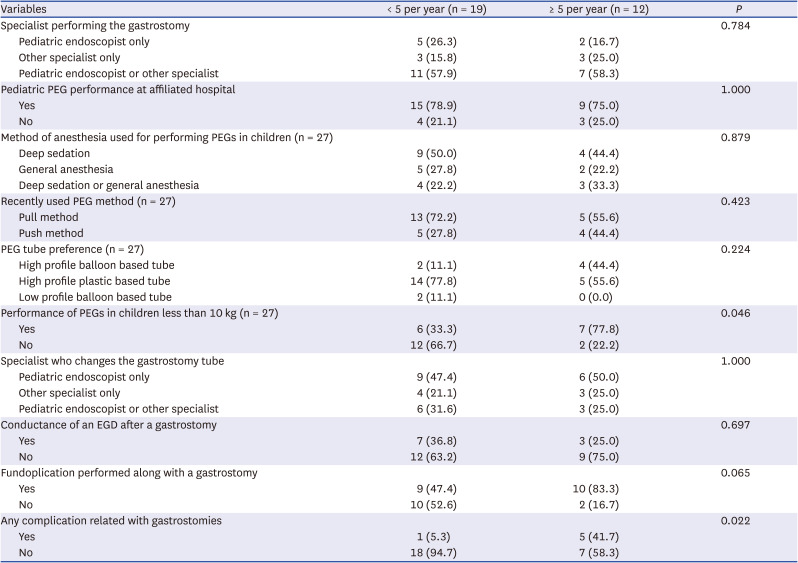
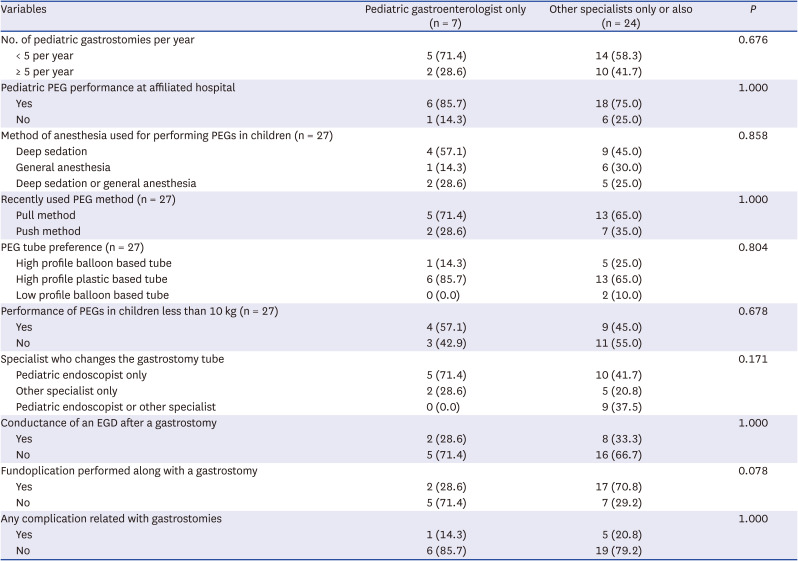
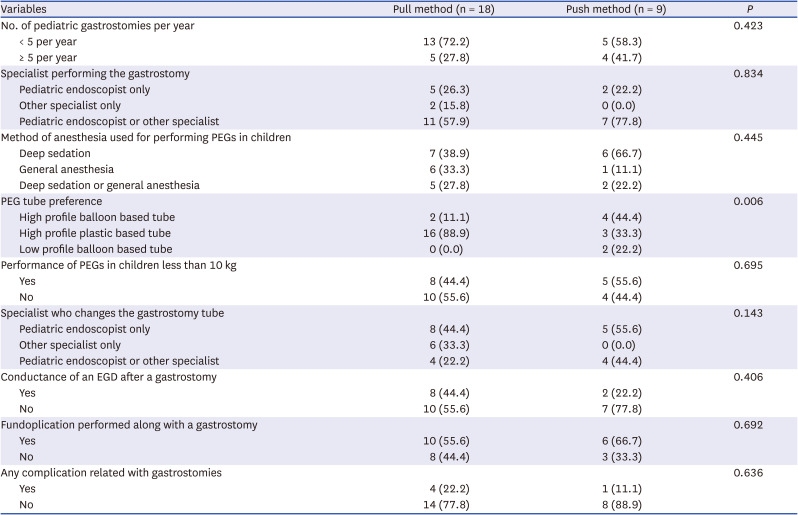




 PDF
PDF Citation
Citation Print
Print



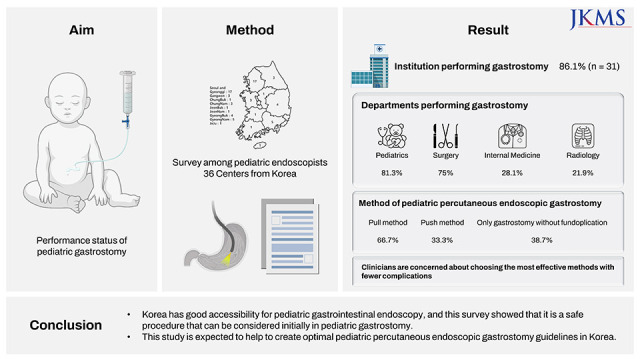
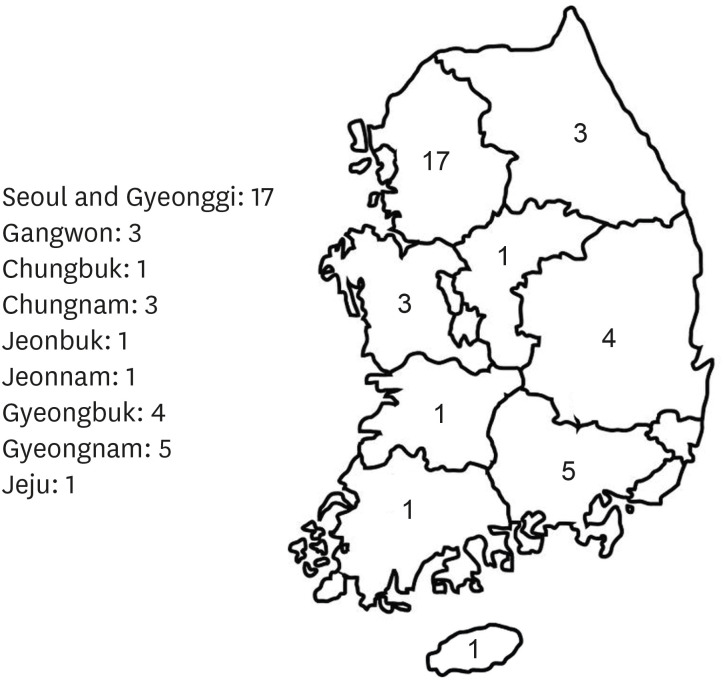
 XML Download
XML Download